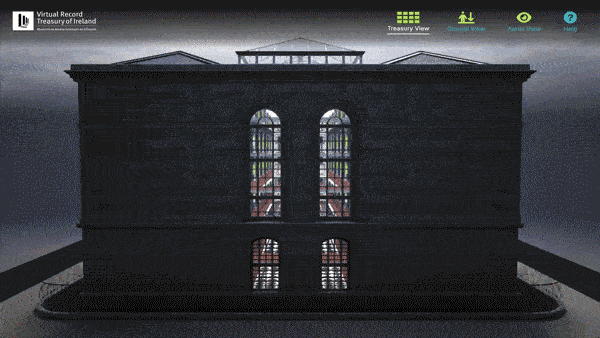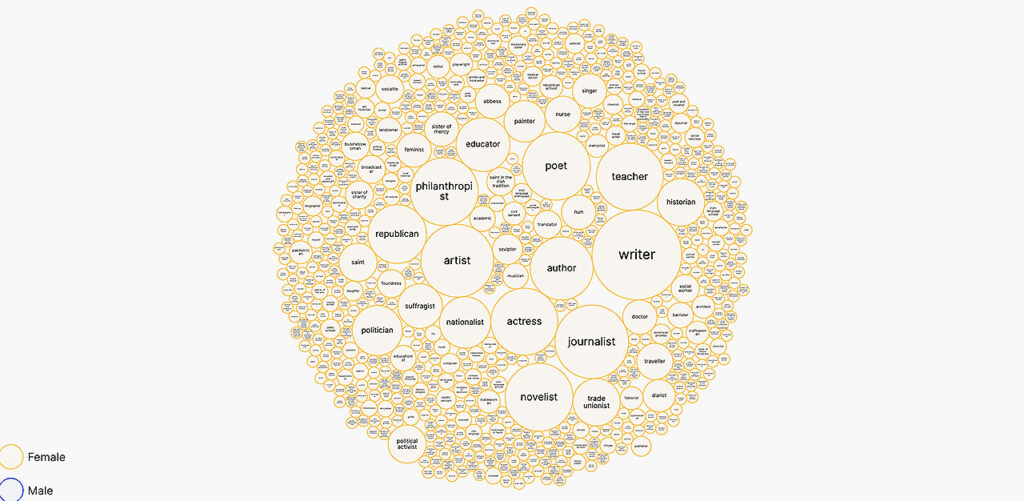In 1922, amid the brief though brutal Irish Civil War, Ireland saw its national archives go up in flames. Bombarded by the National Army, the Public Record Office of Ireland (PROI), located in Dublin and housing a trove of material ranging from census records to maps to parish registers, was consumed by fire and destroyed from within. While some material making up about 400 bundles was salvaged from the rubble, the large part of a seven-centuries-old archive was decimated.
But no longer. A hundred years on from its destruction, the PROI building and its collections have been revived and recreated as an online database and a virtual tour — all products of the state-backed five-year program, Beyond 2022.
What happened

In partnership with 70 global institutions, the Virtual Record Treasury of Ireland amasses some 150,000 Irish public records, accessible to all and for free. Image: Virtual Record Treasury of Ireland
On June 27, Beyond 2022 launched the Virtual Record Treasury of Ireland, a digital repository of Ireland’s public records stretching back to 1174. The portal allows visitors to text-search and retrieve some 150,000 records and more than 6,000 maps, or browse visualizations that offer dynamic views of datasets. These so-called “replacement” materials were mined from the archives of 70 global partners, including the British Library, the National Archives at Kew, University of Notre Dame, and the Morgan Library and Museum.
To provide what it terms “next generation access,” the Virtual Record Treasury of Ireland has leveraged tools like Semantic Web for its UX design and Knowledge Engineering, a branch of AI, to facilitate open access.
Virtual reality, too, is in play: the platform offers a virtual visit of a digitally recreated PROI building, complete with aerial and ground views. Using navigational arrows, visitors can inspect its exterior and tour its interior in 3D, while reading up on the building’s history. A Treasury View further presents users a graphic and interactive way to explore select records.
Why it matters

The virtual tour of the POIC building, recreated in 3D, includes a Treasury View that presents visitors with an interactive way to explore select records. Image: Virtual Record Treasury of Ireland
With cultural heritage at the mercy of not just time, but also social and political forces (as evidenced in events like the 1922 POIC fire and the ongoing war in Ukraine), digital and now Web3, with persistence and access on their side, have become key solutions in preservation. In this, the Virtual Record Treasury of Ireland joins other endeavors like the Duchamp Research Portal and BBC 100 in ensuring cultural objects and documents can claim some manner of digital permanence.
According to the Beyond 2022 team, the Treasury represents the mere tip of its broader ambition of supporting the digitization of Ireland’s cultural heritage. The research program intends to produce applications in Linked Open Data and Semantic Web to enhance the digitization efforts of other cultural heritage organizations, while exploring interactive tools such as VR and Web3D to deepen public engagement.

The portal’s interactive elements like data visualizations offer users engaging ways into the archive. Image: Virtual Record Treasury of Ireland
The ongoing project itself represents a worthy endeavor that uses digital tools for the purposes of memory and record-keeping, while making these records, however dry at first glance, equally useful and interesting for academics, researchers, data miners, and laypeople. For the latter group, in particular, the platform’s interactive elements such as its data visualizations and virtual tour provide accessible entry points from which to engage with the archive.
What they said
“The Virtual Record Treasury is an enduring and meaningful legacy for our decade of centenaries. It belongs to the people of Ireland, democratizing access to our rich archival heritage and making our shared history accessible for everyone. It is an invaluable historical resource for people of all traditions across the island and for everyone of Irish heritage around the world.” — Micheál Martin, Taoiseach



